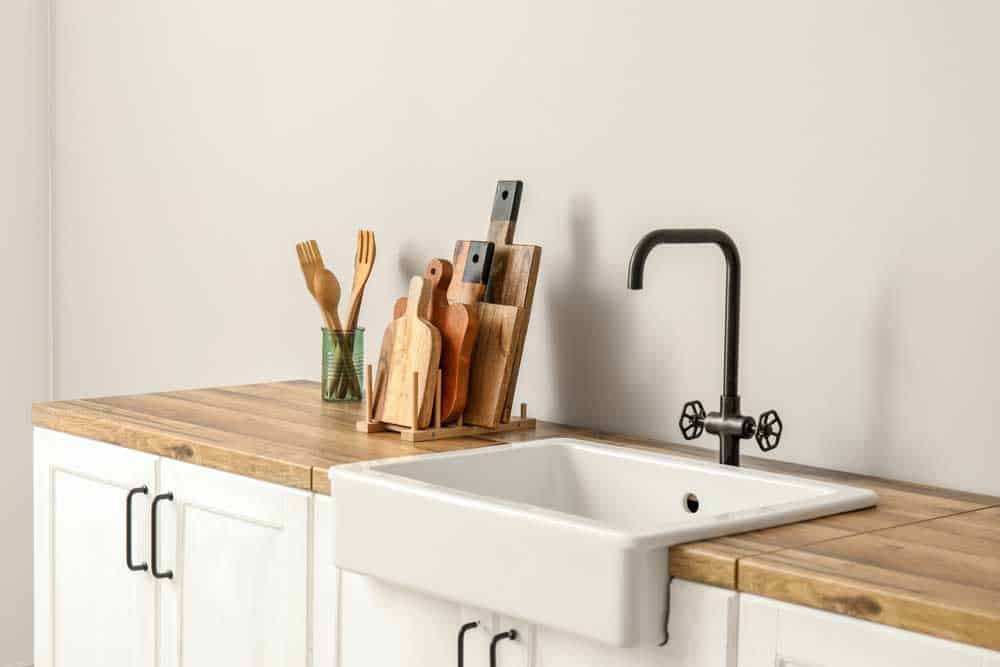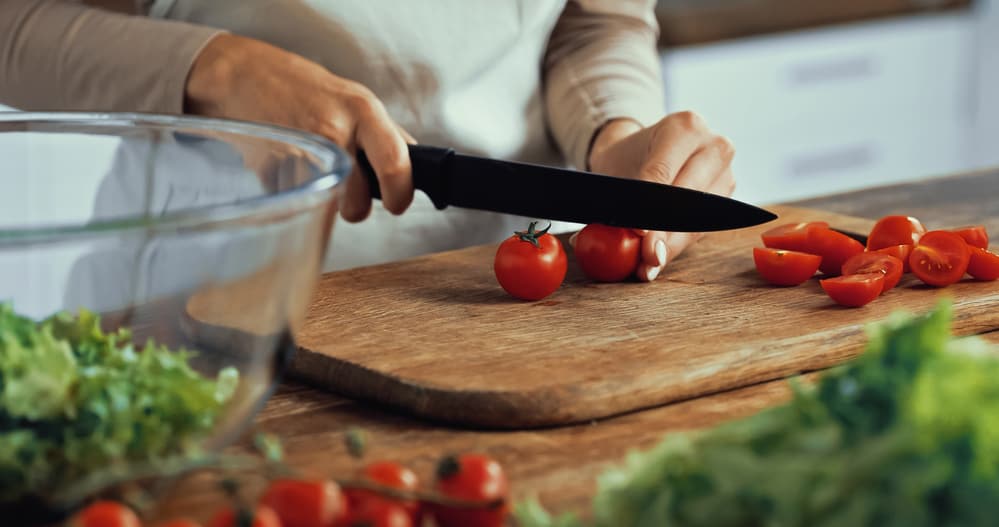When we look at cutting boards, wood vs. glass cutting board is one of the arguments that we come across.
From bamboo, plastic, cherry wood, and oak to glass cutting boards, which is the best?
Chopping boards play an important role in our kitchen, and glass seems the best option because it looks nice. But is it practical and safe?
Usually, tempered glass cutting boards are safe because they are non-porous, sturdy, and can be washed easily, which cannot be safe for wood cutting boards.
However, glass is dangerous and can shatter if you drop it.
Let’s look at the wood vs. glass cutting board article below.
Glass Cutting Board- Pros
You’ve seen the plastic vs. wood cutting board debate, and now it’s time for glass.
Glass cutting boards are easy to clean and virtually do not smell at all, making them one of the most sought-after boards after wood.
Not to mention they look super good in your kitchen!
Let’s look at the pros of the glass cutting board.
Hygienic
Glass cutting boards are way more hygienic than wooden cutting boards.
It is not porous like wood, so water and bacteria are not stuck on the surface. However, wooden boards have a porous surface where bacteria can grow.
They can even escape your cleaning! To prevent this, you have to oil the wooden board.
This is unnecessary with glass cutting boards to make them hygienic, as they have a smooth, non-porous surface.
You can cut chicken, seafood, and raw meat with ease. You can also use bleach; it will just slide right off when you wash them!
Dishwasher-friendly
Glass cutting boards are easy to clean, especially since you don’t have to do it by hand. You can simply put it in your dishwasher, and they don’t stain easily.
This is low-maintenance and ensures that the glass cutting board is always hygienic.

(putting dishes in the dishwasher)
Does not build up bacteria and has no smell.
Since the surface of tempered glass is non-stick, it has no micro-organisms as much as wood cutting boards.
It does not build up odors and bacteria and keeps the surface clean. It is simple to clean by rinsing with water and wiping clean.
Resistant to heat
Glass cutting boards have to go through many thermal treatments to be strong and heat-resistant.
Therefore, these boards can handle high temperatures of 243 Celsius.
This ability improves how you use the cutting board, as you can use it to cover your pots or hot food.
You can also place hot pots and pans on it without worrying about heat damage.
Waterproof
Tempered glass cutting boards are waterproof. Since the surface is smooth, water slides off and does not damage the cutting board.
This is unlike wood, where lots of water is bound to crack the board.

(aesthetic of cutting boards)
Glass Cutting Board- Cons
While glass cutting board have their pros, they have some drawbacks.
They can shatter into many small pieces when they fall and are too smooth, which causes the knife to slip. It can also make your knife too dull.
It is too slick.
Tempered glass boards have a smooth surface, which makes them slicker than wood boards.
This can make your knife slip and hurt you or ruin your food. You can cut yourself even if you’re skilled, especially if the knife is sharp. You cannot chop quickly.
Tend to dull a knife quickly.
The surface of the glass cutting board may look nice and easy to clean, but it can interfere with your knife’s sharpness.
Only a few uses and your knife will get blunt, eventually needing more sharpening.
This can be annoying and expensive, so consider this with a glass cutting board.
Glass boards can break easily.
Although glass cutting boards are toughened and are not like normal glass, they can still break into many pieces if you drop them.
Unlike wooden boards that do not break when you drop them, glass boards will break.
This is harmful, especially for kids and pets, and even more if the little pieces get into your food.

(cleaning up glass)
You might get annoyed at the sound.
Imagine constant tapping at a glass window. This is what a glass cutting board will sound like!
Using your knife on a glass cutting board will make an annoying sound that many people don’t like. If you are sensitive to sound, the glass isn’t for you.
You have to work slowly.
The slick surface of a glass cutting board is not for those who want to quickly dice and slice their food.
You have to go slower when preparing your food to prevent yourself from getting hurt and the horrid sound the board gives off.
This may be inconvenient if you need to make food quickly.
Wood vs. Glass Cutting Board
Now it comes down to wood and glass cutting boards.
Glass cutting boards are made from sturdy tempered glass and are generally safe and easy to use.
They can handle high temperatures and do not allow water/juices to enter the board, reducing bacteria growth.
Now, while these are all advantages, wood can do more or less the same things without the safety hazard.
A wooden board, usually made from oak and other high-quality wood types, is naturally resistant to moisture and bacteria.
This decreases the chances of germs getting into your food. Wood boards are also safer to use on your knives and will preserve their sharpness.

(wood cutting board)
Conclusion
Everyone needs a cutting board, and many materials come in. Glass cutting boards look nice, safe, easy to clean, and durable.
But they are not as practical as wood cutting boards. So wood is unlimitedly the best option for you, and it still looks good in the kitchen.
